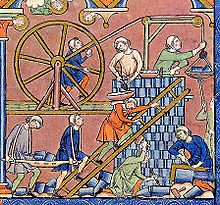Fashion & Nobility:
Aurel Kolnai and Fast Fashion


Aurel Thomas Kolnai (1900-1973), one of the great exponents of value theory, is the root of this book’s argument that Tory ethics and Whig aesthetics can combine well in fashion. Developed towards the end of the nineteenth century, value theory is strongly associated with central European thinkers: Meinong, Hartmann, Ingarden, Wojtyla, Brentano, and Scheler, to name a few. Raised in late empire Hungary and doing his university studies in Austria, Kolnai uses the idea of nobility to meld the Whig and Tory positions. Comparable to Ferguson, he shows how ideas of veneration and refinement are linked.
In making his distinctive contribution to the concept of nobility, Kolnai hoped to thread his way between two strongly held polemical positions. For the Victorian Herbert Spencer, modern commercial life had said good riddance to nobility. Tied to war and the valorization of military life, nobility had been replaced by industriousness, the cleverness of banking, and the modest gains of insured risk-taking.[4] Horrified by Spencer’s vision of modern life, Scheler defended nobility as an aristocratic corrective of commerce; his meticulous descriptions of objectively knowable value hierarchies functioning as a rampart resisting the superficiality and narrowness of industrial consumerism.[5] Significantly departing from Scheler’s conception, Kolnai discerns in nobility traits of the mobility and populism typical of the commercial culture long championed by the Scots. Despite this, Kolnai was persuaded by Scheler’s broader claims.
2
Scheler agreed with the Scots about the importance of feeling and sympathy but was nonetheless utterly appalled by the Scots’ appeal to vanity as a rightful motivation in human life. It is not too much to say that Kolnai’s entire project in ethics is to blunt Scheler’s criticism of commerce whilst acknowledging that Scheler’s interest in stable hierarchies is not merely warranted by value theory but essential to good politics.[6] Most fascinating about Kolnai’s account of nobility is the analytical precision with which he pursues the connection between the moral value of nobility and its place in social reality, privilege. Kolnai’s defence of privilege makes him one of the twentieth century’s great conservative theorists but it also makes him timely as he sought to resolve an extraordinarily difficult and serious problem in modern Western sensibility: How to inject high moral worth into a thoroughly commercial culture devoted to vanity and fashion?[7]

3
The Scots, and especially Smith, were keenly aware that vanity might reduce merely to glamour and become enervating, but were nonetheless convinced that vanity without refinement would short-circuit. Adornment, they thought, is inseparable from the energy of fashion. Liberty exists, insists Hume, because people flock to cities to see men and women of fashion.[8] Kolnai does not disagree, but merely makes explicit that fashion is supported by privilege.




4
Hume’s account of luxury and fashion clearly trades on the idea of privilege. Can privilege also explain how fashion contributes to justice? Appealing to an old scholastic topic — whether there are any acts that are morally indifferent — Kolnai argues that indeed there are. Among the medievals, Scotus agreed, Aquinas did not.[9] Closer to Scotus, Kolnai argues that in daily life we navigate myriad value clusters and exchanges only some of which are emphatically moral. It is the proper adjudication of our daily interactions with others — the bulk of a person’s life that helps form our ability to judge rightly the interactions carrying moral emphasis. The ennoblement of the person, is, insists Kolnai, organically related to lesser value clusters, moral and non-moral.
5
Kolnai is more interested in the field of human action than with the geography of the field of values. In the field of human action, large scope exists for acts of daily living that, even if they do not perfect human life, certainly do not rubbish it, either. In a more thoroughgoing manner than Scheler, Kolnai takes seriously the idea that many human acts attach to low values, and thus are valuable; values towards the bottom of the hierarchy are still properly part of the hierarchy. Rather more, and here the influence of the British school makes itself felt, the commonly enacted values of ordinary life, most of which are not properly moral, are nonetheless the indispensible condition for flights towards the higher, tone setting values of a richly articulated, elevated, and moral culture. Certain events in the world come laden with values that are genuinely moral — they come with moral emphasis — but these events are always atop, and emergent from, a broad array of worldly events laden with values that do not carry such emphasis. Nobility, if its moral poise is to register at all, must draw broadly from the culture and thus be pervasively present there in some embryonic fashion. Kolnai is thus partial to the English saying: “I knows a gentleman when I sees im.” Kolnai has no desire to dilute the claims of nobility but its aristocratic character must give an egalitarian nod towards a sensibility where politeness, for example, can be refined into graciousness; where the cautious risk-taking of a stolid propertied class can ultimately merge into the extravagance of the fashionable; and where common decency can grow into benevolence.

6
Kolnai was especially interested in the problem of moral precariousness. It follows from his argument above. Many legitimate value practices — for example, fashion, sexuality, policing, and war — can easily slip into a far more morally fraught register. Fast fashion is a case in point. In Chapter 3, we saw this is a highly problematic aspect of the fashion industry. The vast majority of people wear cheap clothes. Often there is sentiment to limit sweatshop conditions. H&M champions both the recycling of clothing and paying good wages in their Asian factories.[10] However, the situation is far darker than they are ready to admit. As was exposed in the horrific building collapse at the Rana Plaza clothing factory in Bangladesh, most Western companies in fast fashion actually have no idea where their clothing is made.[11] Fast fashion clothing companies rely on middlemen to farm out their contracts because they need rapid supply of “hot” items. The numbers are impressive. Benetton has 700 suppliers to ensure maximum flexibility in ramping up and redirecting styles and items of clothing. Whilst it remains a mark of haute couture to showcase spring and autumn collections H&M introduces a new fashion item each week. H&M’s business model — inexpensive trendy clothes — is heavily exposed to Bangladesh because labour costs are about one quarter that of China.[12] Registers of factories Western companies are willing to work with struggle with facts on the ground. Fast fashion companies do not have enough personnel in-country to know which factories are making their clothes and oftentimes local auditors are complicit in the “work around” for fear of losing the business in their community entire. Factories working to tough deadlines — fines for missed deadlines are often draconian — will often sub contract the work, subcontracting upon subcontracting, sometimes even down to the cottage industry level, where a family with their small children will all be at work fulfilling partial orders.[13] Work often percolates down to the estimated 10,000 hand weavers in Bangladesh.[14] [15] Work days in many clothing factories reach 12 hours, and often more when deadlines are to be met. The work is intense: a waistband button on jeans to the tune of 500 pairs per hour.[16] It must be owned, however, to many this work is preferable to the alternatives in agriculture; and there is a tried and true path that such garment factory work launches development in countries.[17] In Cambodia, even labour activists support the employment of underage girls as the alternative is oftentimes the sex trade.[18]
7
These last points are crucial. As we saw in Chapter 4 discussing Smith and Scheler on axiology, the value hierarchy as developed by Scheler has utility or hedonic values on the last, least valuable, rung of the ladder. Kolnai might agree with Benedict that fast fashion exhibits no distributive justice reducing business to contract: nonetheless there is a real utility to these contracts. Certainly, they add no polish to the companies involved, they offer no evidence of high-mindedness, but a low value they remain. In fact, these low values are a crucial anchor to civilisation as such.
8
The lineaments of the hierarchy of values flashing within an event with moral emphasis will share much with Scheler’s, thinks Kolnai, but alertness to emphasis stems from the quickness of spirit encouraged by daily interaction. Kolnai’s basic claim is that the crucial, value-enhancing work of nobility does indeed depend on hierarchy but hierarchy is more diffuse than someone like Scheler appreciates. Kolnai’s point tracks one made by Hume. Wondering about the origins of genius, Hume argues that the individual genius celebrated in history books emerges from a spirit of genius pervading a people and essential to this common spirit are conditions fostering law, mastery of mechanical arts, learning, and commerce.[19] These conditions are generic, and shared and supported by many, they form a consensus: laced throughout the consensus are knots of values that encourage individual flourishes of genius. Nobility is one of these generative knots.


9
The idea that the high moral tones of nobility merge with daily life is quite contrary to Scheler. For Scheler, nobility was first and foremost a bodily phenomenon, a squandering of energy in play and war.[20] In Scheler’s terms, nobility is an expression of certain vital values. Amongst all values, vital values are most at threat from a utilitarian, calculative, industrial sensibility, thinks Scheler. Much to his credit, Scheler constantly drew attention to the fate of the body in modernity, especially respecting matters of fertility and childbirth, the integrity of the land, and the character of childhood.[21] Many today, from both Right and Left, would agree with Scheler.[22] Placing nobility in this value register, it is little wonder that it plays such a polemical role in his criticism of commerce. Indifference to the cost for the body of war and sport is in sharp contrast to the careful exercise of the executive hoping to consistently look good on the job or only interested in games where client development can proceed apace.
10
Kolnai is less persuaded of the polemical value of nobility precisely because he thinks Scheler has misplaced the phenomenon. Scheler, says Kolnai, is clearly right that nobility touches on “the grace of body” but to key it completely to exhibitions of vital values like “health, energy, robustness, well-being and welfare” is simply a “phantasmagoria.”[23] Scheler has radically narrowed the significance of nobility. He is, thinks Kolnai, overly influenced by Nietzsche’s naturalism. Granting that ideas like “good breeding” and “noble blood” are connotations of nobility, they do not, insists Kolnai, exhaust the concept.

11
A right appreciation of the value of nobility recognizes the quality in a harmony of body and mind. Its leading qualities of mind are good conversation, an effortless taking pleasure in the world, being cultured and kind-hearted. These, thinks Kolnai, are attributes that must be present and we typically also expect something like “good breeding:” an ease of bodily gesture and disposition that owes a good deal to good education set mainly by example. The latter is typical only, argues Kolnai, for the biography of Kant shows that the qualities of mind can be present in a broken body. Given that nobility draws qualities from across the range of the human person, better to acknowledge that nobility is a compenetration of diverse attributes. In Kolnai’s own words:
In my own surmise, nobleness is not so much a special value modality besides vital, moral and aesthetic value as the mark of a specially intimate compenetration between a concrete being (notably, a person) and some salient modality of vital, aesthetical, intellectual or moral values (CH, 181).
12
Evidently, despite his populist streak, Kolnai’s notion of nobility draws heavily on Scheler’s value hierarchy yet his conception tends in the way of Humean refinement rather than the simply aristocratic; Scheler being surely correct that the latter has a preponderant bodily air. To Kolnai, nobility is more attitudinal or cognitive and assumes a strong element of control or self-mastery; it is far less about physical expansiveness. Kolnai writes: “We would call a man ‘noble’ whom we could not as it were imagine to act or behave in any situation otherwise than with intensity, grace, genius, originality, grandeur, justice, generosity or high-mindedness” (CH, 181).

13
Rejection of Scheler’s bodily, aristocratic sense of nobility is not, to Kolnai’s mind, to argue that nobility is disembodied or heavily tinged with egalitarianism. Scheler and Kolnai are both cousins, as it were, to the tradition of the Scottish moral sentiments school, and like that tradition Kolnai thinks that our grasp of the world depends on our emotions and their perceptual-valuational character. A simple intuition of moral emphasis is possible, values can appear unmediated to (emotional) consciousness. However, in the normal course of things, thinks Kolnai, values make their appeal in and through social institutions that can run counter to, or foster, the appeal of moral sentiments. Indeed, moral consciousness is only rudimentary without this mediation. Moral intuition is, in any rich sense, social.[24] It is a signature theme of Kolnai’s thought that the value setting tones of nobility require privilege.
14
For this claim, he offers a compelling phenomenological observation. Imagine, he asks, climbing a hill. On the flat, before climbing, various aspects of the landscape stand out. Even a little elevation, however, adds richness to what one sees. In particular, with the climb underway, one can come to see behind the buildings and copses that previously had blocked one’s sight. The phenomenology of height shows that civilisational values like nobility are only acquired atop elevated social positions (CH, 175-76).

This point, crucial to Kolnai, modifies his populist strain; he grants that egalitarianism is a value, but care is required. For profound moral and political reasons, Kolnai identifies egalitarianism as most definitely a low value, tending towards a disvalue: for it tends to restrict our very capacity to recognize value, rejecting, as it does, raised positions. Constellations of words and social concepts in all cultures set the refined, dignified, and noble at a height. If egalitarianism is fostered by modernity, and before it, by a certain strain within Christianity, then a politics of privilege is necessary to shore up institutions of height, the importance of which, phenomenology, ordinary language, and social practice confirm. Unless shored up, egalitarianism will eat away at privilege and therewith nobility, and even dignity. A point I return a bit later.
15
Kolnai’s regret about most defenders of nobility is that they are overly metaphysical and rigid in their conceptions. Almost entirely absent from any of Kolnai’s work is an ontological or metaphysical perspective. Starting from a value phenomenology and a keen sense of politics, he is confident he has resources enough for thinking through the implications of nobility in modernity. An aristocratic institutional arrangement is one necessary feature of a society with a healthy politics.
He writes:
…positions of authority, power, rank, prestige, wealth, etc., deserve being respected and honored not because they warrant personal excellence but because they stand for a vital necessity of social order and are conducive to the recognition by and in society of the hierarchical distinction of values… So far, an “aristocratic’ society is both possible and desirable (CH, 185).
16
It is an implication of his theory of moral emphasis that these value bearing sites of privilege sit atop a broader reservoir of value ladenness. Kolnai writes:
The nobleness of society depends, not merely on the nobleness (in the widest sense of the word) of its leading members but also on the nobleness of its members in general, as a whole, and the possibilities it affords for the unfolding of the nobleness virtually present in its average, I would venture to say in its humblest members (CH, 185).

17
This point is a nod to Hume and to it Kolnai adds a condition that also acts as an explanation of his hopes for a noble populism: that certain deontological conditions mark a noble society. Beyond matters of refinement, personal flair, and institutions of elite-formation, a noble society requires deference to rules of justice and beneficence. Amongst members of a noble society, there should be a degree of promptness about satisfying these deontological claims:
… the height of values embodied in a society depends, not only on the high values conspicuous in it, but also on its readiness to do justice to the principle of the urgency of values. If the expression ‘a good society’ has any meaning at all, it can only be measured by the standard of vigour, wealth and temperateness in all directions (CH, 185).
18
These deontological requirements — importantly, to Kolnai’s mind, more ably analyzed by Scheler and Ross than Kant — operate as “democratic correctives” (CH, 185) and impose a restraint on behavior. In Kolnai’s terms, they have a “thematic primacy.” The point is not original to Kolnai but it is employed by him widely and shapes much of his moral vision. The point is well known from moral theology.
19
Aquinas, who is typical, divides the law into precepts and counsels. The distinction irks people committed to social justice. Though the prohibition “Do not kill” knows exceptions, the moral logic of homicide is readily discernible, and it compels the will in a straightforward way, obvious to conscience. Contrasting with such a precept is the counsel to “feed the poor.” Both Thomas and Kolnai grant the power of this precept but both also acknowledge that how exactly it is best accomplished is far from obvious. Quite distinct approaches can be taken with regard to the alleviation of poverty: perhaps Hume is right about the place of republican government, free initiative, and vanity, or perhaps ideas of assisting the least advantaged with income controls, as in Rawls, is best. Both approaches stem from very different moral presuppositions, and yet little is obvious.

To decide the issue, elaborate philosophical debate is necessary, as well as evidence from history, business experience, and other social sciences. Thematic primacy thus belongs to the deontological prohibitions that forbid certain actions rather than moral counsels that encourage certain actions. In many ways, it is this distinction that helps Kolnai rehabilitate the bourgeois values of commercial society and adds a layer to Benedict’s analysis of the moral standing of fast fashion.
20
There is a tendency in many ethical accounts — Kantianism, social justice ethics, certain strains of perfectionist Christian ethics, existentialism, and even strains of utilitarianism — to denigrate ordinary life. Kolnai certainly appreciates the call to moral seriousness found in these ethical theories but he fears they have a warping effect on moral consciousness, somehow dismissing the everyday concerns of bourgeois life as a life based on disvalue. Perhaps the values sought by the bourgeoisie are not especially high but obsessing about how she looks the H&M shopper is seldom an axe murderer. Conventionality has its place and, in its own way, affirms something deep. There can be no generous or high-minded life in the absence of a legal order backed by “a massive power to sanction and enforce it” (CH, 183): about this, says Kolnai, Hobbes is exactly right. Analogously, Kolnai adds that the value hierarchy clearly celebrates generosity, and places the realization of this value high above selfish enjoyment but, and the point is a deep one, “this lower goodness exists massively in its own right, whereas the imparting of goods to others would lose all conceivable meaning if the goods themselves were not goods fit for straightforward self-enjoyment” (CH, 182). Without detracting for a moment from the argument that feel-good fashion is morally better than fast fashion, and that companies are under a value requirement to move towards the estate, it is nonetheless true that fast fashion does deliver certain low values both to consumer and worker and these values are a soil to morally greater things.




21
Thus it is not necessarily a criticism to observe that commercial societies do have a tendency to stick at the lower end of the value hierarchy. Nonetheless, Kolnai’s interest in nobility is a counterweight to this tendency. He accepts that the bourgeois value of honesty is a duty, having thematic primacy, whilst “high thinking” and pursuit of grandeur are not, even though they are “incommensurably more valid value [s] than to live in comfort and security” (CH, 183). Granting that the great Whig proponents of commercial life have shown the engine of capitalism is the appetite for beauty, still Kolnai’s hope is that refinement acts as an allurement towards nobility proper; that the cluster of aesthetic, moral, and intellectual values that comprise nobility stand to one another something like the rungs of a ladder.
22
Kolnai is sure that ethics does not warrant any sort of social justice claim that commercial appetites and values must morally give way to higher order values. Kolnai writes: “Ethically or axiologically speaking, we might even erect the primacy of the service of higher values over the cult or elaboration of lower values into a universal principle” (CH, 183). The cultic celebration of low values is to be morally frowned upon but this is still a far cry from a social justice thinker like Peter Singer who thinks that when people are starving somewhere in the world it is immoral to have “stylish clothes, expensive dinners, a sophisticated stereo system, overseas holidays, a (second?) car, a larger house, private schools for our children, and so on.”[25] Singer is a modern day Puritan, longing for the introduction of sumptuary laws: he is one of Hume’s “severe moralists.” For such moralists, the Whig consensus is unacceptable and vanity is to be eliminated with a strict moral control of the beautiful. Kolnai’s thought is completely other. Privilege — a political necessity — can assist a moral toning of society but it can do no more than situate high values and allurement must do much of the rest of the work. If the allurements fail, and assuming the values with thematic primacy are acknowledged, a society will not be noble but not morally eviscerated either, only some variant of a perfectionist ethics would say so much.
23
The value hierarchy well warrants Scheler’s worries about the enervating consequences of commercial culture but not his sense of crisis. To Kolnai’s eyes, Scheler’s use of the value hierarchy is too deterministic. A man who railed against mechanism, Scheler has himself obscured too many distinctions available to a careful moral phenomenology. His sense of crisis assumes that a society has failed in which there is not a straightforward movement from low values to high. Kolnai’s theory of moral emphasis shows that on many occasions high moral values are to be promptly affirmed and pursued, but human life is, so to say, for the most part, mundane; where interactions are ably performed with politeness and honesty, by contract, and with an eye to self-interest. Myriad interactions are not straightforwardly moral but nor do they run counter to morality. As Kolnai concludes: “Disappointingly as it may sound, while higher and lower values and categories of value undoubtedly exist and can to some extent be explored, no linear schema of a “hierarchy of values’ can stand up to closer scrutiny” (CH, 184).
24
Having modified Scheler’s “linear schema” with a pluralism of values, however, Kolnai’s argument issues in what might seem a paradoxical result; it is certainly arresting. Nobility is a compelling value resting atop an elaborate moral field of clusters of values that themselves draw upon manners of interacting that frequently have no moral tone at all. Though not obligatory, nobility is alluring, a constellation of moral and aesthetic values needing, for political health, to be embodied in privilege. Nobility then has tones of distance and independence; it carries the sense of being dominant, or at least, being self-contained and so not put upon (CH, 176). With these attributes, nobility touches upon some of the value themes of dignity. Kolnai has one of the most thoroughgoing treatments of the concept of dignity, one that has received prominent attention.[26] Significantly, though dignity shares some features with nobility, it has far fewer attributes touching on the aesthetic. To my knowledge, Kolnai nowhere draws out the full connections between these two vital moral and cultural ideas, but the two do not map squarely onto one another. Noted much earlier were Kolnai’s doubts about the overly physical treatment of nobility at the hands of Scheler. This was not, of course, to doubt that motifs of refinement, even bodily poise, properly belong to the experience of nobility. Material refinement, however, is not part of the experience of dignity: Kolnai writing, “such basic aesthetical dimensions as grace, shapeliness, intensity and poignancy have little or nothing to do with dignity.” In contrast to nobility, its attributes are almost all exclusively moral, thinks Kolnai.[27]

25
The heirs of the Enlightenment on the Left are right to think commercial societies cut against dignity — a perpetual theme in Leftist writings. For fashion tends rather towards nobility, at least when understood pluralistically, as a cluster of moral, intellectual, and aesthetic values. Conservatives equally rather miss their target when skeptical about the place of commerce in our lives. Of course, conservatives can rightly be concerned about dignity, and properly so, but they can also rightly celebrate nobility. Nobility and dignity are both high moral phenomena, proper to affirm, and they are connected, but not identical. To use Kolnai’s language, commerce puts the emphasis on nobility and this will mean at times putting dignity in the shadow of nobility, or an emphasis on the beautiful more than the good.[28]
To my mind, Kolnai’s analysis of nobility provides us with a remarkable lens on one of the great cultural conflicts of our time — what moral standing to accord commerce — and helps resolve the moral issues involved. Having read Kolnai on nobility, individual taste might still be drawn to the Left’s skepticism about commerce but that skepticism will clearly now be understood for what it is, a matter of taste, not an urgently felt moral obligation to reform.
26
FOOTNOTES
[1] For a biography of Kolnai, see F. Dunlop, The Life and Thought of Aurel Kolnai (Aldershot: Ashgate, 2002).
[2] For my general account of his ethics, please see my introduction to A. Kolnai, Politics, Values, and National Socialism (London: Transaction, 2012). I employ Kolnai’s value ethics widely in my Ecstatic Morality and Sexual Politics.
[3] “The Samurai Sell: Lexus Dealers Bow to Move Swank Cars” (Amy Chozick).
[4] H. Spencer, Political Writings (Cambridge: Cambridge University Press, 2001).
[5] M. Scheler, On the Eternal in Man (London: Transaction, 2009), p. 379 amongst many others.
[6] And some think to good law: “Wigged Out: Hong Kong’s Lawyers Bristle Over Horsehair Headpieces” (Te-Ping Chen).
[7] There is strong evidence that ISIL is a social movement responding to this very issue: Scott Atran, “ISIS Is a Revolution” found at webzine, Aeon.
[8] Ibid., p. 271.
[9] A. Kolnai, “Morality and Practice II,” Ethics, Value and Reality (London: Transaction, 2008), p. 99.
[10] “Can Cheap Clothing Generate Fair Wages? H&M Believes It Can” (Robin Givhan: Washington Post).
[11] “Why Retailers Don’t Know Who Sews Their Clothing” (Tripti Lahiri and Christina Passariello).
[12] “The Global Garment Trail: From Bangladesh to a Mall Near you” (Syed Zain Al-Mahmood et al.)
[13] “The Myth of the Ethical Shopper” (Michael Hobbes: Huffington Post); “A Huge Underclass of Ghost Workers Are Making Your Shirts in Their Homes” (Marc Bain, Quartz, December 17, 2015).
[14] “Fair Trade Goes Beyond ‘Made In’” Safia Minney, BOF, June 18, 2015.
[15] As late as 1979, before the massive contraction in the British clothing industry during the Thatcher years, an estimated half of London’s clothing production was output of homeworkers (E. Wilson, Adorned in Dreams, p. 83).
[16] “Factory Paychecks Trump Danger, Long Days for Bangladesh Women” (Gordon Fairclough).
[17] “In Bangladesh, the Slow, Tragic March to a Better Life” (John Bussey).
[18] “Underage Garment Workers Dodge Rules in Cambodia” (Kate O’Keeffe).
[19] D. Hume, “Of the Rise and Progress of the Arts and Sciences,” Essays Moral, Political and Literary, p. 114, 118.
[20] M. Scheler, Formalism in Ethics and Non-Formal Ethics of Values (Evanston, IL: Northwestern University Press, 1973), pp. 106-07.
[21] M. Scheler, The Nature of Sympathy, pp. 106-07.
[22] For my own sense of the issues connected with the body in modernity, see Ecstatic Morality and Sexual Politics (New York: Fordham University Press, 2005).
[23] A. Kolnai, “The Concept of Hierarchy,” Ethics, Value and Reality, p. 180; hereafter = CH.
[24] A. Kolnai, “Moral Consensus,” Ethics, Value and Reality, pp. 144-64.
[25] J. Kekes, The Illusions of Egalitarianism (New York: Cornell University Press, 2007), p. 118.
[26] Human Dignity and Bioethics: Essays Commissioned by the President’s Council on Bioethics (Washington D. C, 2008), pp. 173-211.
[27] A. Kolnai, “Dignity,” Politics, Values, and National Socialism (Transaction, 2013), pp. 227-50.
[28] I explore this point more in the essays, “Business Ethics and Catholic Social Thought,” Nova et Vetera, Vol. 4:1 (2006), pp. 17-27; “Vanity and Temptation: Was Thomas Reid a Critic of the Scottish Enlightenment?” Journal of Scottish Thought (Vol. IV: 2010).